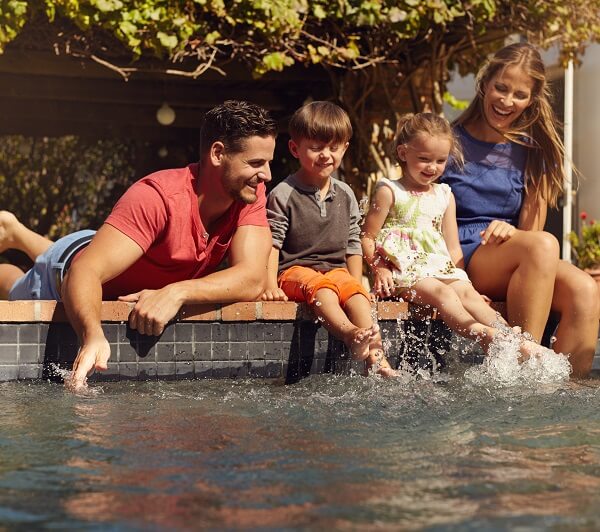

You asked and we answered!
Children can drown in as little as 2" of water. Children should never be left alone near any body of water! Even in a baby pool. Children need to be taught how to stand up in shallow water. A toddler can drown in a baby pool just because they topple over and don't know how to put their feet down underneath them and stand up. Most drownings occur when children aren't supposed to be in the water. They have snuck out the doggie door and gotten into the backyard pool that did not have a self-latching gate. Drownings have occurred when children are in the backyard playing ball and they go after a ball that falls into the pool. Children have fallen in before when riding their tricycle too close to the pool. Even the most vigilant parents can have children that drown. Make sure that you have a fence that goes just around the pool. A backyard fence is not enough. Also make sure that all toys and games are stored away from the pool area. The place to start is with teaching your children to swim. Participation in formal swimming lessons can reduce the risk of drowning by 88% according to the National Institute of Health.
Parents are surprised that they didn't hear their children when they fell in the pool. Typically, children can have a drowning incident just by walking off the step into deep water. It doesn't make a sound. Parents think they will hear their child yell for them or make loud splashing noises. That just doesn't happen. Parents would never put their child in a car without putting them in a car seat. You would never put your child on a bicycle without a helmet. More children suffer fatal drownings each year than the number of children injured in car and bicycle accidents combined. Yet there are children that are not enrolled in swimming lessons. Make sure you do your homework and find a swim school that has a teaching philosophy you agree with.
If you have a pool in your yard, you should start swimming lessons as soon as the baby is mobile. Between 6-9 months. Comfort in and respect for the water and underwater breath control can be learned quickly at this age. If you don't have a pool in your yard, 9-15 months is my favorite! They are old enough to develop skills such as turning and swimming back to the wall, monkey walking along the wall, and backfloating.
Swimming lessons should NEVER be the cause of trauma to a child. Survival lessons prey on a parent's worst nightmare. The ends do not justify the means. Yes, they learn to float but at what cost to the child? No child should be repeatedly submerged and then forced onto their back. Children can be taught to self-rescue without being traumatized. Survival lessons teach swimming using a conditioned fear response. Children do what they are told (backfloat) because if they don't, they will not be able to breathe. This is not an effective long-term teaching method. It can cause toxic stress in a child that can lead to fear of the water and also trust issues. The person a child trusts most to protect them, their parent, stands on the side of the pool and cheers while they are being repeatedly submerged and forced to float on their back. There's a reason the lessons are only 10 minutes long.
We teach children to be able to rescue themselves if they fall into the water by swimming back to the side or by turning over and floating on their back. After mastery of these skills, we do a "Float Test" where a child comes dressed in their clothes and a fall into the water is simulated. The swimmer can float for 5 minutes or swim to the side, whichever comes first. Children need to know what it feels like to swim with the added weight of clothes and shoes. You don't want the first time a child experiences this added weight to be when they accidentally fall into the water.
We strongly recommend not using any type of floatation device that goes on a child's arms. A life jacket that is coast guard approved and fits well is a good safety measure. IF you are going to use some type of floatation device this summer, a good tip is that you put it on inside the house. Then it does not come off until you are back in the house. Children will learn to never go near the pool without their life jacket on. Children have drowned because they swam with their lifejacket, took it off to have a snack, and then got back in without putting the lifejacket back on. Always stay within arm's reach of your child near the water. Always designate a "Water Watcher" when having parties or groups swimming in your backyard. Everyone knows that THIS person is responsible for watching the swimmers AT ALL TIMES and is not to be bothered. You can rotate "Water Watchers" every 15 minutes so there is ALWAYS someone watching the children.
Written by Tracy Laman, Aquatics Director of Houston Swim Club